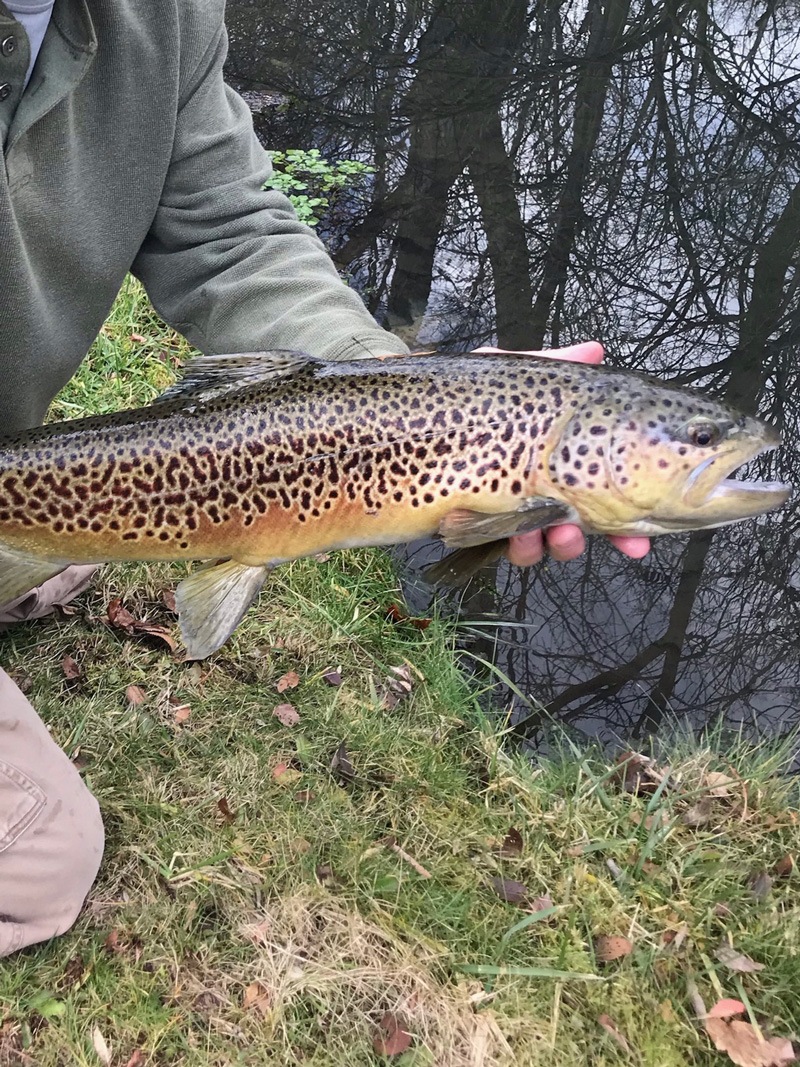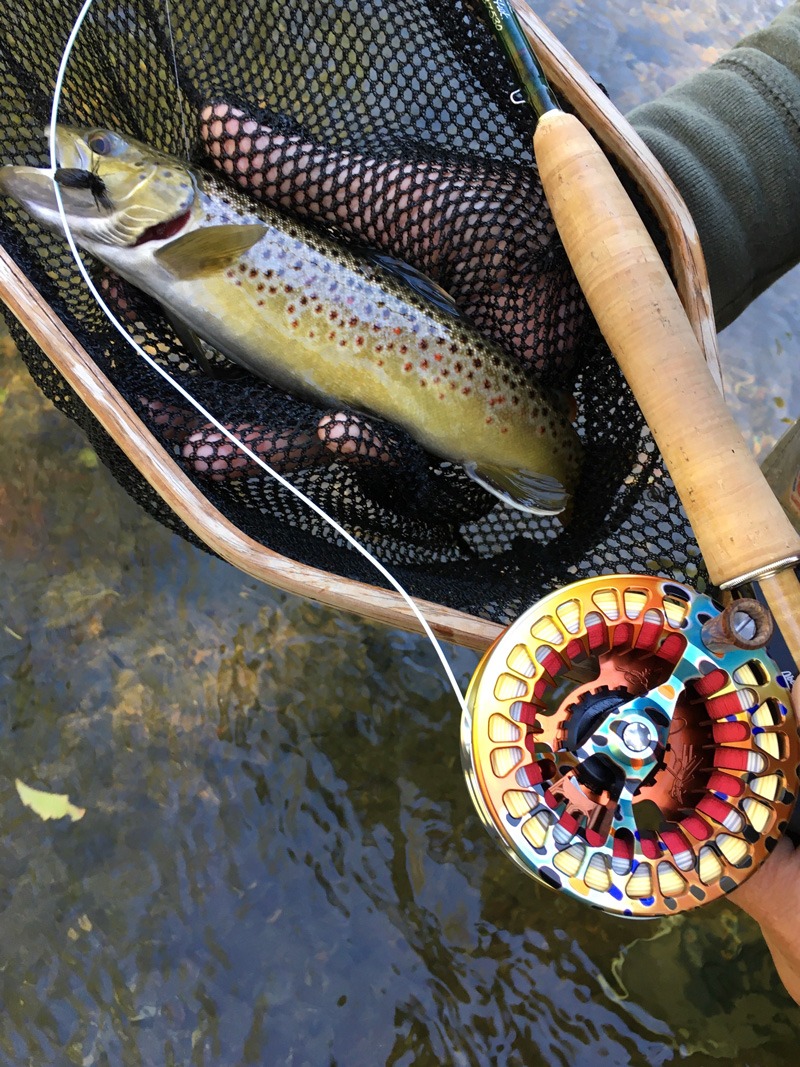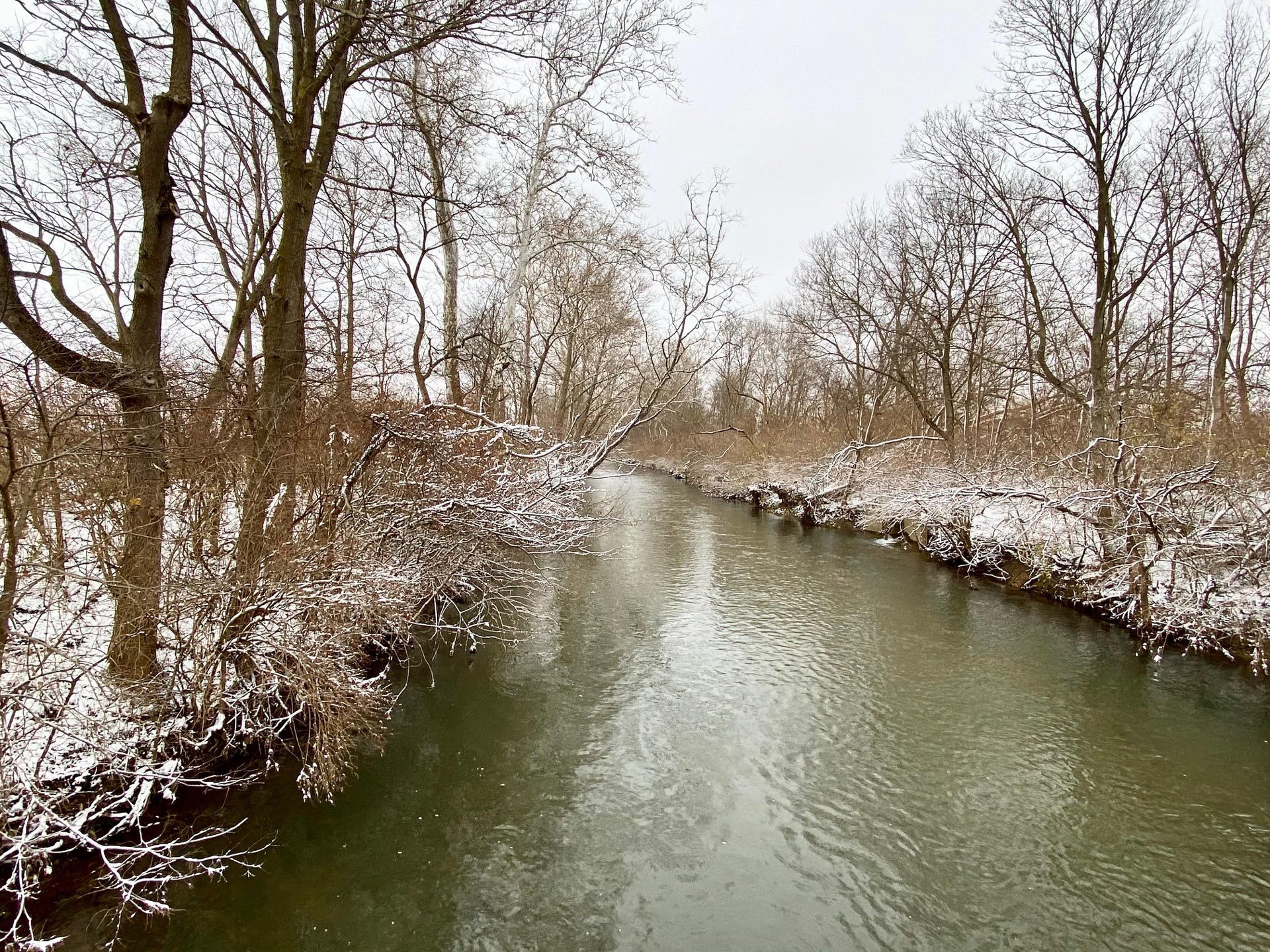To my fishing pal, Buck. Thank you for always being ready for the next adventure, showing me the way and for helping me record this in the journal log.
Mad Seasons
With several spring creek tributaries and numerous cold water seeps, Ohio’s Mad River is the state’s only all year, cold water fishery with substantial public access. Like Pennsylvania’s Yellow Breeches Creek, the main river is not a true spring creek (emerging from the ground in full form), but rather it is a spring-fed stream that starts life with free-stone characteristics.
The Mad basically runs north to south through the agricultural setting of rural Champaign County, separated from the corn and other crops by a thin but dense strip of trees that occupy the river’s predominantly high banks. This setting, incidentally, serves to shield the angler from winds that may be sweeping the open ground at any given time. These same features also provide a maximum amount of shade when the clouds aren’t doing their part.
Heavy springtime rains and raw agricultural run-off can often keep the Mad running high and at times discolored. These rains can and do change the complexion and flows of the river from season to season. These conditions seem to persist further into the season each year. While streamers and larger nymphs can produce some of the Mad’s largest brown trout at this time, we find the Mad most enjoyable and at its best later, during its “second season”.
At some point during the mid-summer (it varies), the Mad seemingly transforms itself into a wonderful imitation of a true spring creek. The water assumes a new clarity and the flow levels drop and remain constant and still chilled. The wading becomes more pleasant, and the trout begin to congregate into the deeper lies, log jams, and under-cut banks. This is the time for terrestrial insect imitations. However, due to the fact few fields actually butt up to the river, grasshopper imitations can prove to be in-effective.
In late September or early October the river makes another slight but noticeable adjustment. The water becomes even more clear, and it now possesses a slight golden hue that is difficult to explain. Moreover, each rock, boulder, and pebble on the stream’s bottom stands out in high relief. These are the days when we think that “our” Mad River is the finest of all trout waters, bar none! While there can often be a fair stretch of thin water between them, pods of holdover browns can be discovered. One carefully fished section can provide a couple hours or so of first-rate action. Don’t rush it. We prefer to take turns casting in these situations, with the observer providing sage advice that upon rare occasions is even heeded. Parachute Caddis patterns with a trailing Caddis Emerger in tan or caddis green often fills the bill. A skating adult pattern such as a Kings River Caddis is a killer when the trout are up to chasing the adults.
With our combined seventy years of fly fishing experience on the Mad River and while the calendar may not agree, we regard the leaf fall to be the start of the winter fishing season on the Mad. There is an old saying that Winter trout fishing is best when the angler is most comfortable. That seems right to us. A day in the low forties can be reasonably pleasant as long as there is some sun and very little in the way of wind. Make sure your feet are warm, and wear a hat as well. It need not be fashionable. Really, the farmers just don’t give a hoot.
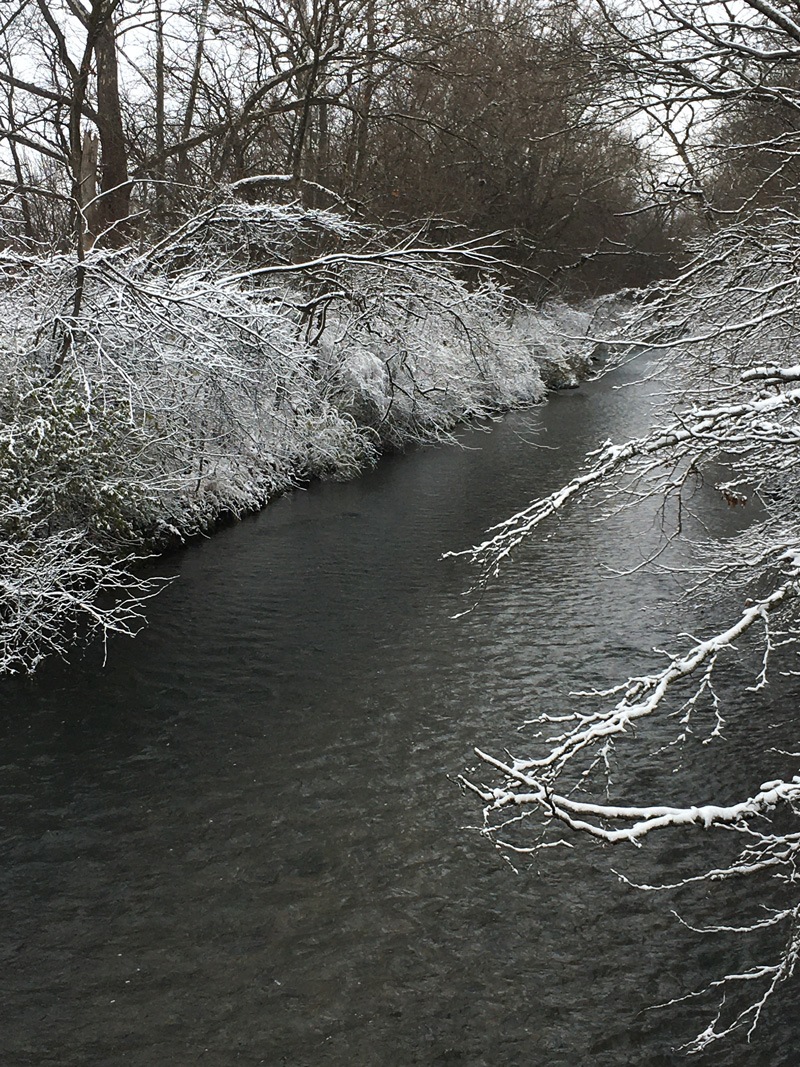
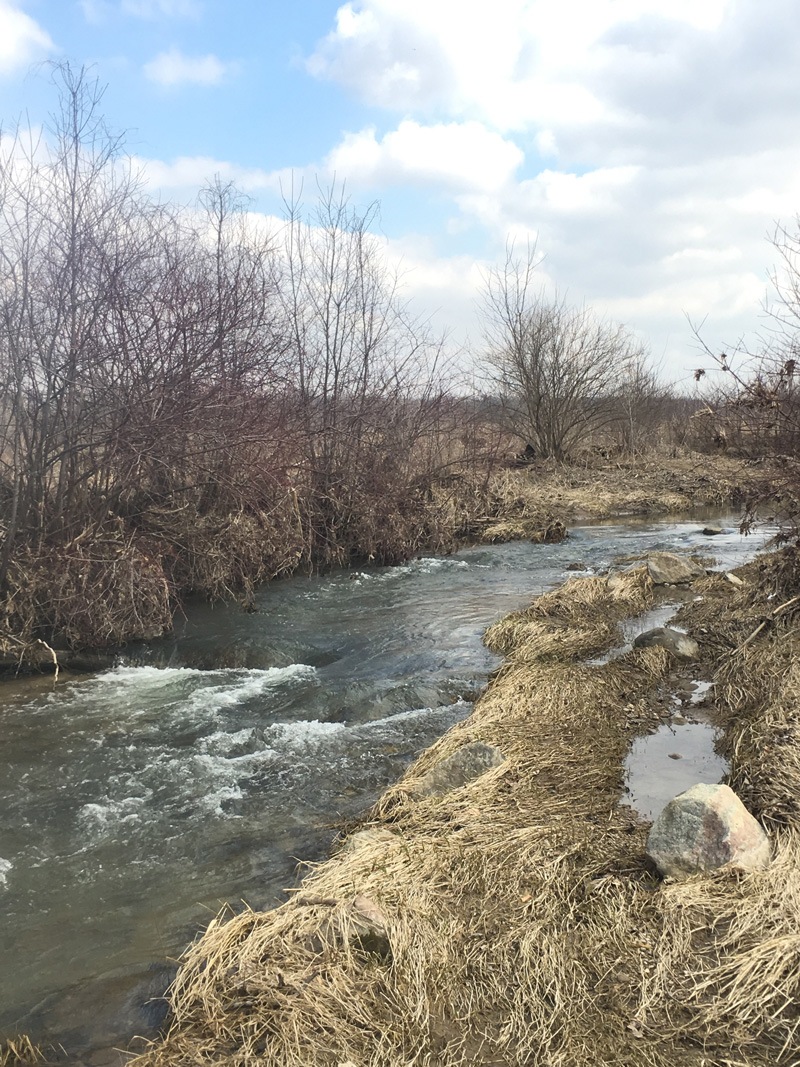
Winter Patterns
The following represents a look at some successes in regards to finding fish and choosing the correct technique with the proper fly attached during the short days of Winter. Crisp, clear days produce substantial hatches of tiny dark colored midges that can inspire surface feeding trout. The lower and slower water flows permit the trout to expend a minimum of effort when feeding on these low-nutrition tidbits. This can be the most challenging and rewarding kind of dry fly fishing available on the Mad. The highest degree of stealth is required when approaching these trout. Longer and lighter lined rods are needed to maintain drag free drifts and long, light leaders and tippets are a must for the proper presentation of the imitation from the moment of the very first cast. One of the best opportunities to present the fly will be to rising trout positioned in eddys where insects pile up in the foam. The same kind of opportunity exists on drizzly, overcast days when small Blue Wing Olives are known to hatch in quantities that will have the fish looking up. Fly patterns that have and continue to fool the resident browns on the Mad would include: Polar Crippled Olive, Griffin’s Gnat, Olive and Pheasant Tail Klinkhammers in sizes 18-20. The winter flows reveal holding waters that distinguish themselves from surrounding shallow water. Preferred lies will include cover from fallen wood and perhaps overhanging bushes or shrubs providing cover and shade. These deeper runs prove to be a gathering spot for chubs and suckers as well as the brown trout. It seems the suckers stir up food morsels while working the rocks and the trout set up shop behind the diggers and grab all the many food items coming to them in the biological drift. Tight line nymphing with two flies has proven to be the most effective technique to use in this situation. The top fly on your leader should be weighted in relation to the speed of the current for appropriate depth of the drift. The top fly should bounce on the rocks or just above. The bottom fly should be dropped off the bend of the hook on the top fly with no more than 24” of tippet and no weight between the two flies. The top fly is normally the larger size of the two. Suggestions for the top fly would be a Jungle Cock or a Pheasant Tail Nymph in sizes 14 and 16. Our go to fly selection for the bottom fly is either a tan or a caddis green larvae with no weight in sizes 16 and 18. Winter streamer fishing calls for slow wading and casting through long stretches of all types of river conditions. Special emphasis should be placed on moving the fly erratically, parallel to the bank with the prevailing current. This presentation mimics the natural movement a wounded or distressed food source would exhibit. A smaller streamer pattern has proven to be the most successful size which seems to best imitate the prevailing food sources available during the Winter. The streamer pattern with the most success over the years has been Rusty’s Matuka in yellow or natural on clear days and olive or black on overcast days. Sizes 6,8, or 10. We treasure those too infrequent days when everything aligns to give us a pleasant winter day for dry fly fishing on the Mad River. And when we can take even one or two trout on our floating midges, it is a very special day indeed. The pleasant town of Urbana, Ohio is located just east of the Mad River along Rt. 68. There are numerous opportunities in regards to food, drink, and lodging along the path of the Mad River from West Liberty stretching south to County Line Road. For information and suggestions on fishing the Mad River, please call or stop by our local fly shop, ReelFlyRod or us at Morrett Fly Fishing. We also strongly suggest a piece of butterscotch pie from Grimes Airport Cafe at the end of a day of winter fly fishing on the Mad. Fly suggestions and selections made available by us.